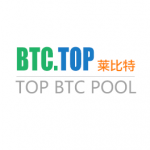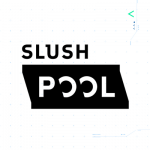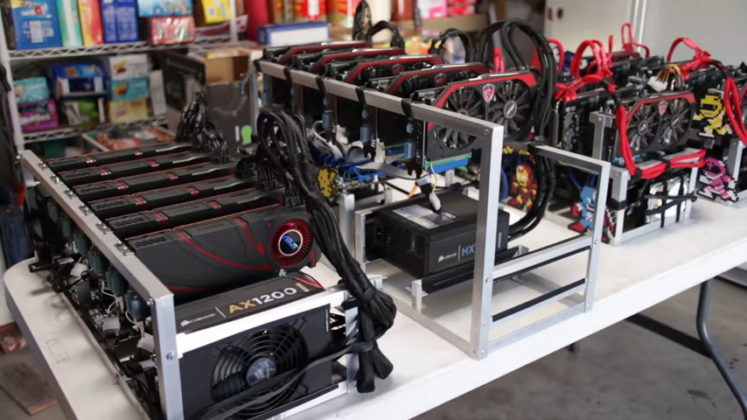Top 10 Cryptocurrency Mining Pools
Mining pools are still popular alternatives to solo mining because you get better returns since combining your hash rate with those of others provides a higher chance of finding a block. With this, however, it's important to keep in mind that applicable rewards will still be shared at the end of the day.
Depending on the payment mechanism used, the rate that is regularly paid out by a mining pool is quite predictable. Pool mining is also easier to set up compared to solo mining as most of the things in the former case are done by the pool admins. The user only needs to do some easy set up on their particular miner, which includes pointing it towards the pool's servers. Otherwise, as a solo miner, you would need to keep up with software updates, connectivity to the bitcoin peer-to-peer network, pool crashing issues and other pool administration issues.
Some mining pools in this list allow for merged mining of two coins at the same time, which means you get more returns at less strain. And except a few, all are public.
Here are the largest mining pools by hash rate share.
BTC.com
The BTC.com pool, which is owned by Bitmain Tech, controls 18% (10.46 EH/s) of all of the Bitcoin network's current hash rate. BTC.com also provides a dedicated wallet and a block data explorer, which are both services that existed before opening of their cryptocurrency mining pool in 2016.
With this pool, users can mine BTC but can also, if they wish, switch to BCH mining contracts at any time. In addition to pooled BTC mining, the BTC.com pool also supports ETH, LTC, ETC, Decreed DCR, Beam, and UBC pool mining contracts. Interested users will need to sign up with the pool, which includes creating a sub account after the initial setup, then selecting the coin they intend to mine from among the list, choosing a server closest to their region, setting a withdrawal address (which can also be left for later) and finally, their applicable hashrate goes live.
BTC.com also supports merged mining, where one is able to mine two cryptos at the same time on a miner as long as they run on the same algorithm. the crypto with a lower hash rate gains additional hashing power by bootstrapping on a crypto currency with higher hash rate. Those mining BTC can merge mine with NameCoin (NMC) and there is also the option of merge mining RootStock (RSK) next to Bitcoin and Bitcoin Cash. The ratios are BTC:ELA=1:3 for those mining BTC in the pool. ELA mining revenue are obtained according to PPLNS mode.
The pool charges a mining fee of 4% and has a 0.001 BTC payment threshold.
BTC.com also uses Full Pay-per-Share FPPS as a payment approach, in which the system calculates a standard transaction fee within a certain period and adds it to the block rewards to distribute the entire amount to the miners. The method, which increases miners' earnings by 10%-20%, ensures that transaction fees are shared among miners.
Besides the Full Pay-per-Share (FPPS), there are other payment mechanisms including the Pay Per Share (PPS) mechanism and the Pay Per Last N Shares (PPLNS) mechanism. The former takes out the "luck" aspect of mining and the variance in a miner's payout, since the miner is payed based on the lottery share they contribute even if the pool doesn't win the lottery. However, the percentage contributed equals the percentage paid even when a block is found. In the latter, PPLNS, miners earn shares depending on the amount of hashes they do and they get paid only once a block is actually found.
In the Double Geometric Method (DGM), which is a hybrid between PPLNS and Geometric, the operator receives portions of payouts on short rounds and returns these portions during longer rounds to normalize payments. The Equalized Shared Maximum Pay Per Share (ESMPPS) mechanism equalizes payments among those owed while the Pay on Target (POT) mechanism pays on the difficulty of work returned to pool rather than the difficulty of work served by the pool. Other features include Pay Per Last N Shifts/Groups (PPLNSG), Proportional (Prop), Recent Shared Maximum Pay Per Share (RSMPPS), Score based system (Score), and Shared Maximum Pay Per Share (SMPPS).
BTC.com mining servers are located in Asia, U.S.A and Europe.
AntPool
The Antpool hash rate share is currently sitting 13% (at 7.18 EH/s). Antpool supports the pool mining of Bitcoin, Litecoin and Ethereum and other 7 coins (Ethereum, Litecoin, ETC, ZCash, Dash, Bitcoin Cash, SCC, Monero, and Byton ). With Antipool, which also owns AntMiner, you can switch between BTC/BCH mining at a click of a button. Antipool, which also supports mobile (iOS and Android devices and WeChat and App) phone real-time monitoring of miners, was started in August 2014.
Those connecting their miners to this pool can also choose servers closest to their location or rather closest regional nodes in order to ensure stability of network connectivity and a 24/7 hours of stable and reliable service. Once registered, a user creates a sub-account, selects timezone, adds wallet address and payment methods, then configures their miner to connect to the various pools. After connecting the miners, users can manage miners by adding miner groups, creating miners, deleting miners and viewing effective minersand all miners, or batch operation of miner from the "Worker" page.
Users are also able to do both real-time and detailed data monitoring of their mining hashrates, users and miners on the network, with clear graphical demonstration.
With regard to reward payments, Antipool supports 4 payment methods, which are: PPS, PPS+, PPLNS and SOLO. The user is able to set these up from the "Settings" page, the payment method they prefer based on their risk tolerance. The PPLNS does not charge any added fees and it assigns rewards once AntPool has found a new block and said block confirms more than 3 earnings. Therefore, with this method, you get 12.5 BTC * Your share count may be calculated by considering: 2.5 difficulty cycle / total share count in 2.5 difficulty cycles. With this method, transaction fees are not paid to miners.
The PPS alternative pays block rewards (from which a fee of 4% is deducted) and transaction fees from which an added fee of 2% is deducted. You can read about all the supported payment alternatives here. The Solo alternative charges a fee of 1% and in this case, transaction fees are not paid to miners. There is also the option to lock earnings and to modify wallet addresses after this locking. Automatic payments can be setup at a 0.001 BTC/LTC minimum.
Antipool also provides merged mining where one can mine two pairs of currencies (Bitcoin and Namecoin or Litecoin and Dogecoin), meaning in addition to getting rewards from mined BTC and LTC, users get Namecoin and Dogecoin subsidies. For instance, for each mined 1 BTC, users get 2-6 Namecoins for free in addition to the block rewards; for each 1 BTC mined users 1 RSK for free (yet to be launched).
To do merged mining, users do not need to go through any extra steps during the initial setup process, beyond providing their NMC/Doge wallet addresses to receive the rewards. The minimum payment amount depends on the crypto being mined, for instance 0.001BTC for BTC, just as is the fees. BTC/BCH mining fee is 4% commission for PPS+, 0% for PPLNS and 1% for solo.
BTC.TOP
BTC.TOP, which is a private Chinese pool that cannot be joined the public, currently has a hash rate share of 12.62 % (6.80 EH/s). It was founded in 2017 by Jiang Zhour, who is a former employee of China Mobile.
BTC.TOP is well-known for heavily mining Bitcoin Cash with huge hash rates that sometimes exceed 51%, but have currently been reduced to around 22% according to stats from Coin Dance. Even so, it was recently reported that the Bitcoin Cash network thwarted a 51% attack.
F2Pool
F2Pool, also referred to as Discuss Fish, was opened in China in 2013 and controls 11.45%(6.17 EH/s) of the hash rate share of its' supported networks. F2pool supports the monitoring of mining on both Android and iOS systems. With the pool, users are able to mine 40 different cryptocurrencies including BTC, ETH, ETC, DASH, LTC, GRIN, Monero, Decred, XZC, and AION. It is one of the oldest crypto mining pools but from China, it has since expanded its' operations to the United States, Canada, Singapore, Russia and other countries around the world.
On this pool, a user can mine without registration unless if they want to mine BTC, ETH or GRIN. When a user signs up, they get to choose a miner. In doing so, it's important to keep in mind that miner performance affects a miner's daily income and each miner supports different currencies. If you are unaware of how the mining of different cryptocurrencies on this pool works out, F2Pool provides guides/tutorials on how to mine each of them. You also get guides on how to choose a miner or how to prepare software and mining GPU cards, as well as other information. In effect, the entire setup process is spelled out in these guides for anyone who's interested in joining the pool.
With F2pool, users can buy hashrates from the NiceHash hashrate exchange platform and configure the NiceHash mining parameters to work with F2Pool. If these are configured with a normal method, F2Pool will consider the hashrate of a normal mining machine and begin to delegate mining tasks to mining machine.
The fee for mining different cryptocurrencies at this mining pool is indicated at this link, but varies from crypto to another, ranging from 2 - 5%. BTC and Dash is 2.5% and the threshold is 0.005; ETH, BCH and Monero is 3%; LTC is 4% and the likes of ETC is 5%.
Slush pool
Slush pool, which was the first Bitcoin mining pool that was announced in 2010, controls around 9% (4.66 EH/s) of the global market share or hash rate and is owned by the Czech Republic-based SatoshiLabs, which also owns Trezor and CoinMap that cater to businesses that accept crypto payments.
The pool has mined over 1 million Bitcoins since its' inception and it has a long history of stable and accurate payouts. It supports the mining of Bitcoin Cash, Namecoin and Zcash.
Besides, the pool has a merged mining feature that lets you mine two coins (Namecoin alongside Bitcoin) all without additional setups after connecting miners. In merged mining, each of the share sent to the pool will contain hashes for both chains; if bitcoin is found, it is added to the blockchain while Namecoin is discarded. A Namecoin block can also be found based on the fact that its' difficulty is generally lower than that of Bitcoin. The process of merged mining is advantageous in two ways: it means you do not add any resources for mining both and it secures both networks and also you get additional payouts as a third advantage. The Namecoins are also converted to Bitcoins and then sent to the Bitcoin address which receives payouts, so again, no extra separate address is required to receive payouts.
In addition to mining, miners on this pool also get to vote on development proposals with the weight of their vote depending on their total owned hash rate. The aggregated pool can also decide where the mining power of those not voting is allocated.
To join the pool, users will need to connect their mining device with ASIC miners; so no CPU/GPU and no phone mining are supported.
In the event that you are able to do so, you will then be able to open an account, confirm the ownership of said account, login, and choose the cryptocurrency you want to mine from the list. The user then points his or her miners towards the pool's stratum servers through the mining software installed in their local machines.
Regarding the payment of rewards to those mining crypto on this pool, the payout is valid once 100 more blocks are generated in the network, which is around 17 hours. This method is used as precaution to make sure the network accepts the mined blocks. There is also a send threshold, or a minimum you want to attain before the earnings can be transferred to your wallet address. More specifically, their payout minimum is 0,001 BTC. For each payout, Slush Pool takes a cut of around 2% and a fixed fee of 0.0001 BTC for payouts less than 0.01BTC.
Slush Pool distributes all transaction fees to miners. Their reward system ensures that the rewards are distributed to miners according to their percentage contribution of hash rates. This is done when the block is mined. They utilize scoring hash rate system, where the scoring hash rate is an exponential moving average from hash rate of all user mining devices connected to the pool. The averaging smooths out short hash rate drops or increases and makes rewards calculation more stable and fair.
Your reward = block value ⋅(1− pool fee ) * your scoring hash rate /pool scoring hash rate;
where the block value consists of the block reward and the fees from transactions in that block, and scoring hash rate is hash rates from time when a particular block was found, and Pool fees for all coins are listed in the Rewards & Payouts section. The pool fees is 2% with minimum threshold being 0.001 BTCm and there is also 0.0001 BTC (only for payouts under 0.01 BTC) as payout fees.
Poolin
Poolin lets users mine with ASICs, GPUs and CPUs. It supports the mining of Bitcoin, BCH, BSV, ZEC, LTC, ETN, DCR, Dash, and Monero. With it, you can set and manage sub-accounts, and a user can still buy hash rate from Nicehash and connect it to Poolin.com. In the latter case, where pool difficulty is too low, customers can customize difficulty for BTC, LTC, ZEC, ETN, and XMR. It currently iscommanding a hash rate share of 7.5%.
Poolin also supports merged mining on the pool, for Vcash alongside BTC mining. This was announced in May this year. Users get VCash in their Vcash wallet addresses which they can set during the time of setting merged mining.
Anyone wanting to mine with Poolin can start by checking their expected income with the Poolin calculator. You can also check the guides on how to set up mining each of their supported cryptocurrencies via this link. After creating a sub account, the user will then connect the miners with the stratum pool servers by setting set mining url, worker and password on the miner configuration page.
The user can then log into the router the miner is connected to in order to find out its IP address or use IP Scanner to figure out the IP. Regarding fee, each of the cryptocurrency has a different fee applied: first of all, it utilizes or supports FPPS, PPS, PPLNS and PLNS payment methods/mechanisms.
For BTC, BCH and BSV, the fee is 4%, while for LTC and DASH, the fee is 2% and ETH and XMR is 3%. Pooling has another service called Blockin through which they provide multi-currency blockchain explorer, wallet and market cap ranking. Blockin is based on decentralized blockchain platform and its all services and products are also decentralized.
ViaBTC
With a hash rate share of 7%, ViaBTC is also a powerful cryptocurrency mining pool supporting pooled mining of BCH, LTC, ETH, Dash, ZEC and XMR cryptocurrencies.
This pool was founded in 2016 and currently is providing services in over 130 countries around the world, has over 1 million plus users served and a 99.99% running time. The service has seen a total of over 180,000 coins mined from a total of 13,933 blocks.
With it, one is able to mine either with CPU, GPU or even ASICS, with a variety of miners from which to choose depending on the crypto being mined.
ViaBTC uses PPS+ method of payment and rewards distribution which they say ensures higher mining yields with security and stability.
And in addition to the mining pool, the pool also provides a block explorer and a multi-crypto and multi-chain crypto wallet.
To start mining on this pool, you simply find Stratum URL for the crypto you want to mine, then create a worker, and then set the pool. This is the case of ASIC mining cryptos such as BTC and BCH OR dASH. For GPU/CPU miner when mining ETH, ETC, ZEC, BTM, XMR, or DCR, one will find the stratum URL, and then use their ViaBTC account name or ETH/ETC deposit address in ViaBTC ETH/ETC pool as your miner name.
The pool also recently launched a ELA merged mining service on May 1, 2019 and allocated ELA merged mining earnings to BTC miners on May 20. For those who mine 1 BTC, they get 2 NMC, 5 SYS, 0.1 EMC, 1 ELA for free. Merged mining also applies to BCH where for 1 mined BCH, one would get 1 SYS for free; and for 1 LTC mined, one would get 1200 DOGE coins for free.
BitFury
BitFury commands a hash rate share of 3.7%. This private pool is located in Georgia and also manufactures mining hardware and chips as well as other blockchain products. Its' products are targeted to both privates, government or other organizations in business. Their blockchain platform solutions include Exonum, Crystal, LightningPeach, and Surround.
For those looking at cooling devices for mining operations, the Bitfury Group has been developing immersion cooling solutions. Other high computing solutions they are working on include a datatank container, which is their containerized solution for their 3rd generation system, which uses immersion cooling.
Bitcoin.com
Bitcoin.com has a hash rate share of around 2.1% as of this writing, and lets users mine BTC and BCH as well as buy other crypto mining contracts. From bitcoin.com pool, one is able to buy hash rate to mine either BTC or BCH.
According to the website, Bitcoin.com pool pays 98% block reward and uses PPS. It provides both cloud mining where one buys hash rates and starts mining through their cloud mining contracts or one can also choose to connect to their pools and mine on their ASIC hardware.
For those choosing to mine with their ASIC hardware, there are no fees. Those who choose cloud mining need to pay a fee of either $0.10 or $0.14per TH/s that is charged daily.


